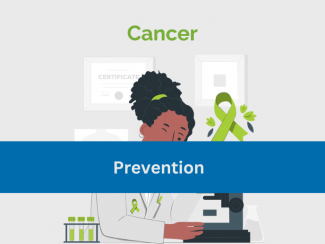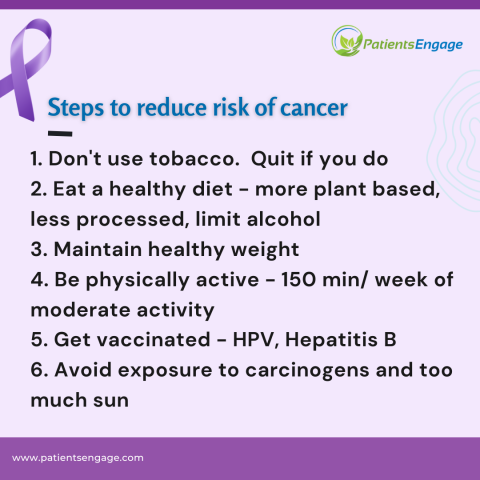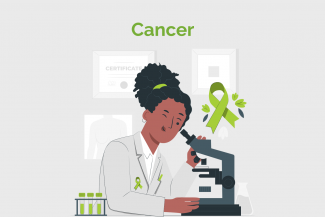Cancer is a group of diseases characterised by out-of-control cell growth. There are more than 100 different types of cancer. The cancer is named after the area of the body or organ where it originates.

Cancer accounted for an estimate 9.6 million deaths in 2018. This cancer burden can be reduced by avoiding key risk factors, early detecttion and management of patients. The risk of developing cancer depends on genes, environment and lifestyle. If the cancer is linked to certain behaviours, it may be prevented. Here are some dos and don’ts:
- Do not use tobacco (smokless and smoking) to protect against oral, lung and several other cancers
- Do not drink excessive alcohol to protect against liver cancer
- Do not stay in the sun for too long to protect against skin cancer. When outdoors, use sunscreen
- Avoid obesity, eat a healthy diet with lots of fresh fruits and vegetables
- Maintain a healthy weight and active lifestyle
- Find out about vaccinations that prevent viral-linked cancer such as HPV and Hepatitis B
- Be screened regularly for colon and prostate cancers.
- Perform self-examination and get regular mammographs for breast cancer screening
- Have regular HPV DNA tests and/or pap smears to rule out cervical cancer
- Avoid exposure to known carcinogens such as air pollutants, ionising radiation, harmful chemicals etc.

Changed
26/Apr/2024
Community
Condition















